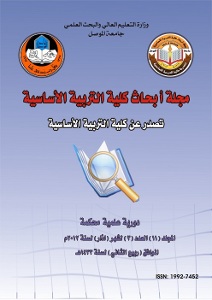The Impact of the Half Strategy on Developing Mathematical Communication Among Second Grade Students in Mathematics
Abstract
Despite the abundance of research and scientific studies, we have not found a tangible effort that matches the decline in academic achievement levels among learners. Improving our teaching methods requires comprehensive development on all fronts, which may necessitate a new mental programming that includes both the teacher and the learner. The majority of teachers tend to teach as if it is a directive from a higher authority, believing that their students will not understand unless they control the lesson from beginning to end. This places all the responsibility for classroom work on the teacher, as it is assumed that this is part of the teacher's duties. One of the ethical responsibilities of a dedicated teacher in fulfilling their duties is to revisit the contentious question, which still has varying and fluctuating answers: Who is the focus of the educational process in the classroom? The student or the teacher? The researcher based his proposal on what has been indicated by some studies, such as (Hassan, 1997) and (Sawalha and Asfa, 2008), where it was noted that the subject of mathematics requires the student to perform certain mental operations such as recalling, thinking, linking, imagining, and intuiting. The student may experience a state of tension that affects these operations and limits their activity, consequently impacting their achievement . The researcher conducted interviews with several experienced mathematics teachers, each with no less than five years of service, and it became evident that most teachers rely on conventional methods. The content of modern mathematics textbooks requires the adoption of new strategies to keep pace with scientific development and progress. The research problem is represented in answering the following question: What is the impact of the Half Strategy on developing mathematical communication among second grade students in mathematics?
